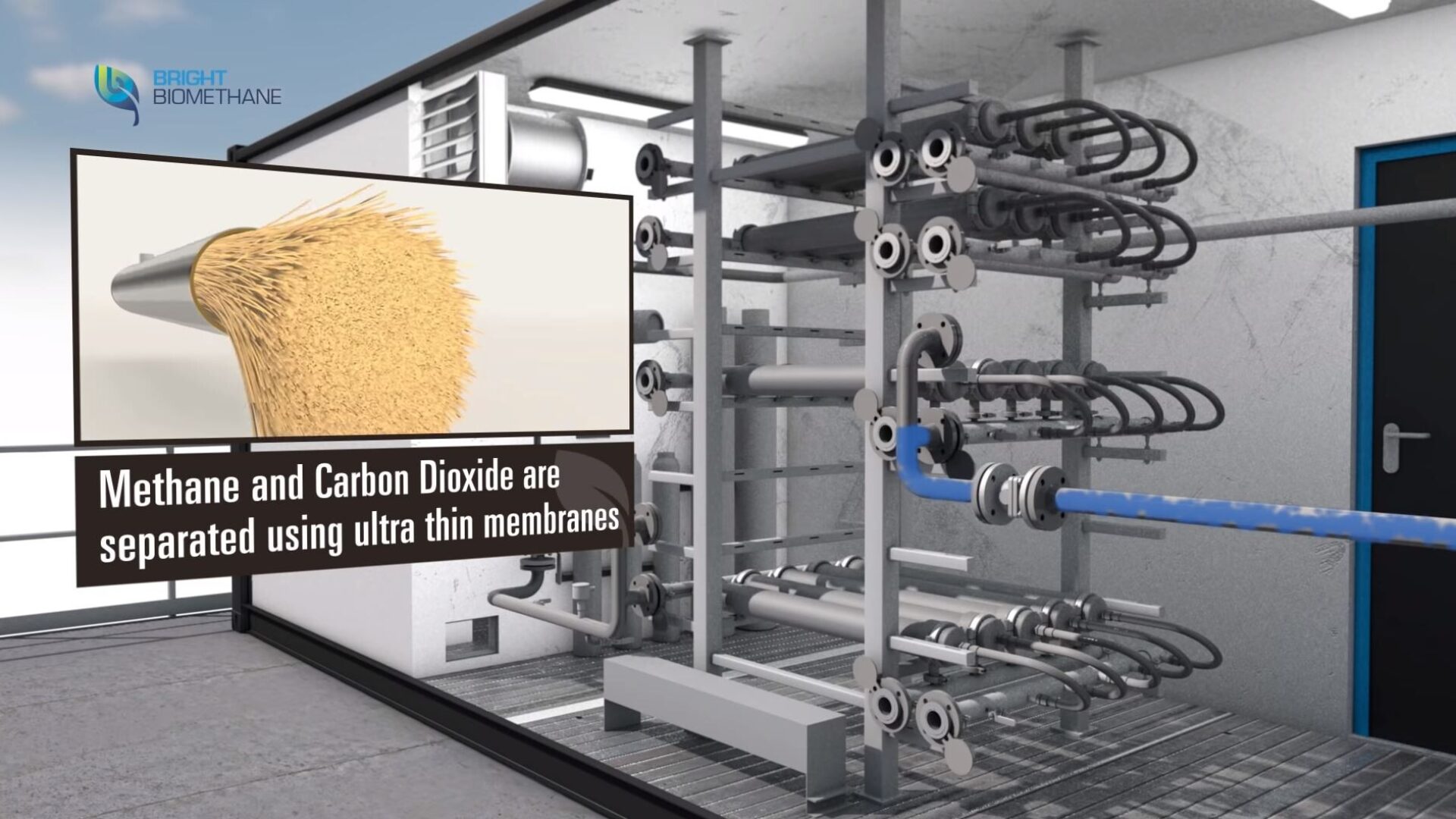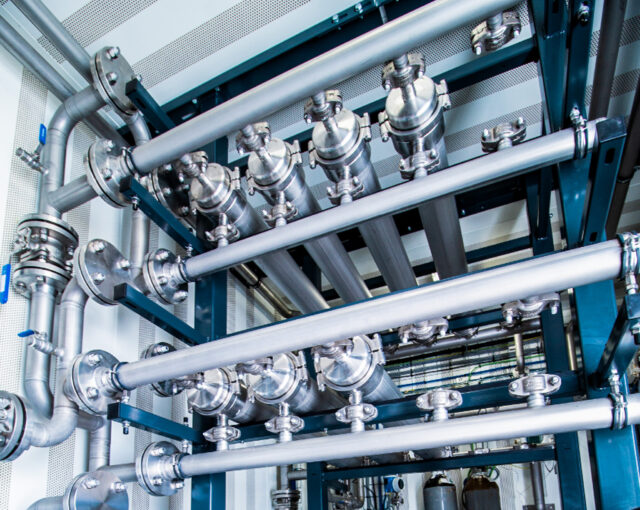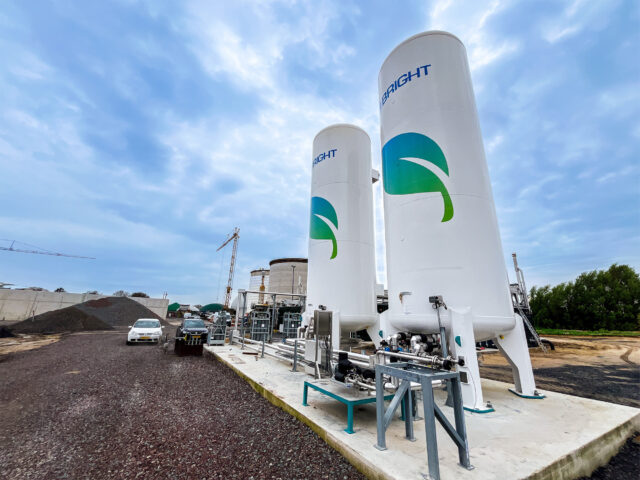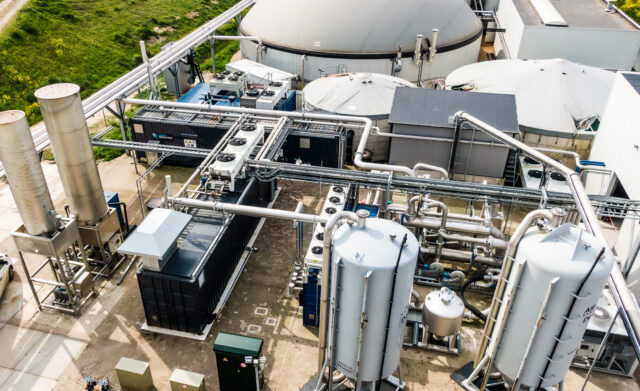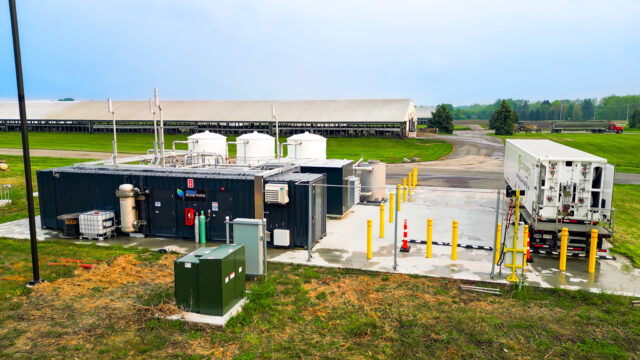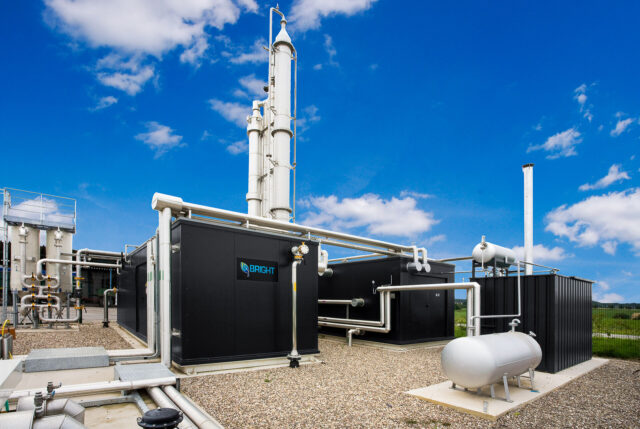
Biogas upgrading: gas treatment

Treatment for biogas and landfill gas
Before biogas can be upgraded it needs to undergo treatment. In addition to pretreatment for biogas, Bright also provides pretreatment for landfill gas. The composition of landfill gas and biogas varies due to differences in chemical and impurity levels. Therefore, it is necessary to have specific pretreatments for each gas before proceeding with the upgrading process.
Features
- Treatment for landfill gas and biogas
- Moisture removal
- Optional heat recovery
- Gas treatment skid with activated carbon
- Applicable to raw biogas from various feedstock types
- Removal of H2S and Volatile Organic Compounds (VOC)
Raw biogas treatment
Pretreatment of the raw biogas is essential before its conversion into biomethane, also recognized as Renewable Natural Gas (RNG). Through biogas scrubbing with activated carbon harmful chemicals such as H2S and Volatile Organic Compounds (VOC) are removed – ensuring efficient and high-quality biomethane production. The technology allows for heat recovery from the pretreatment and compression process.

Pretreatment with activated carbon
The process of gas treatment before biogas upgrading starts with the removal of moisture from biogas. Upon its removal, a blower is utilized to increase both pressure and temperature. The carbon filters will remove impurities such as H2S and VOC from the gas, activated carbon within the carbon filters absorbs these chemicals. As a result, only clean biogas passes on to the membrane technology. This process leads to high-quality and pure biomethane production.

Treatment landfill gas
This landfill gas treatment process starts with condensation of the landfill gas in a cooler. Thereafter, the landfill gas undergoes a pre-compression to ensure the gas reaches the required inlet pressure for the landfill gas compressor. The gas is then cooled to approximately 5°C for further water removal.

Post-treatment landfill gas
For highly volatile halogenated impurities, a regenerative adsorbent system is implemented. Contaminants such as hydrogen H2S, volatile organic compounds (VOC), nitrogen, and siloxanes are eliminated using activated carbon filters – with continuous monitoring to optimize filter replacement. Post-treatment, the gas is compressed using highly energy-efficient screw compressors to the necessary pressure for membrane upgrading, then cooled to remove remaining moisture, and reheated before entering the membranes.
After-treatment
Our after-treatment process analyzes produced biomethane against specifications. Part of the after-treatment can be infusing the gas with TetraHydroThiophene (THT) for odorization before grid injection or CNG storage. This stage also features optimized heat recovery, efficiently reclaiming heat from the process. Designed for minimal electricity use, the system recovers almost all consumed electricity as heat, eliminating electricity wastage and significantly reducing the facility’s energy consumption. Continuous monitoring and actively adjusting the flow and quality of the biomethane ensures a stable quality of the product gas.
Biogas upgrading: how does it work?
